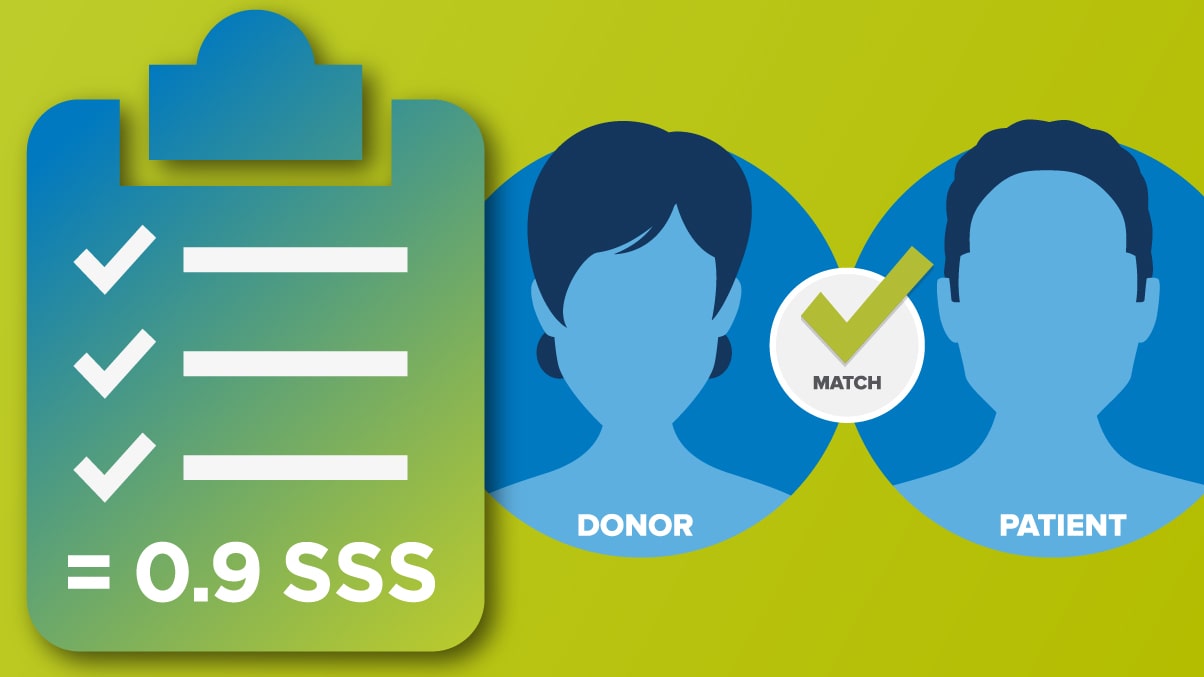When you need a bone marrow transplant, every day matters. You don’t want your transplant team to waste that valuable time by chasing fruitless leads. The quicker they can determine with strong certainty if you have a good chance of finding a fully matched donor, the sooner you can advance to transplant.
A new tool developed by the National Marrow Donor Program/Be The Match (NMDP/BTM) does just that. The Search Summary Score (SSS) for Rapid Unrelated Bone Marrow Search Assessment lets transplant teams quickly assess how likely it is they’ll be able to identify a fully matched or single-mismatched unrelated donor for a patient.
The SSS doesn’t replace a full search but, instead, offers a quick, reliable snapshot to guide decision-making. The SSS incorporates the Donor Readiness Score (an individualized prediction of a specific donor’s availability to move forward to donation) with HapLogic match predictions to provide a cumulative probability of search productivity and the likelihood to have an 8/8, 7/8, 10/10 or 9/10 matched available donor.
The study team validated the new score by retrospectively analyzing the potential donor list of searching patients who proceeded to transplant through NMDP/BTM in recent years. The team compared those patients’ actual outcomes to the SSS prediction. The accuracy of the SSS proved to be superior to other currently available predictive tools. In difficult searches, the SSS can help clinical decision-makers determine whether pursuit of alternative donor options — including mismatched unrelated, umbilical cord blood or related haploidentical donors — is warranted.
The NMDP/BTM team expects the SSS will be especially helpful in more accurately assessing searches with limited options, including patients from ethnically diverse groups. This will allow clinical teams to focus their search strategy on the likely available sources and eliminate delays in the donor selection process. That’s a win-win for everyone.
Learn more by reviewing a comprehensive analysis and description of the study.
CO-AUTHORS
Stephanie Fingerson
Nicole Garrett
Kimberly Wadsworth
Yung-Tsi Bolon, PhD
Martin Maiers, MS
 " />
" />

